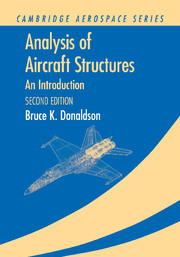Book contents
- Frontmatter
- Contents
- Introduction to the Second Edition
- Introduction to the First Edition
- List of Repeated Engineering Symbols
- Acknowledgments
- Part I The Fundamentals of Structural Analysis
- Part II **Introduction to the Theory of Elasticity**
- Part III Engineering Theory for Straight, Long Beams
- Part IV Work and Energy Principles
- Part V Energy-Based Numerical Solutions
- Part VI Thin Plate Theory and Structural Stability
- Appendix A Additional Topics
- Appendix B Selected Answers to Exercises
- References
- Index
Part III - Engineering Theory for Straight, Long Beams
Published online by Cambridge University Press: 05 June 2012
- Frontmatter
- Contents
- Introduction to the Second Edition
- Introduction to the First Edition
- List of Repeated Engineering Symbols
- Acknowledgments
- Part I The Fundamentals of Structural Analysis
- Part II **Introduction to the Theory of Elasticity**
- Part III Engineering Theory for Straight, Long Beams
- Part IV Work and Energy Principles
- Part V Energy-Based Numerical Solutions
- Part VI Thin Plate Theory and Structural Stability
- Appendix A Additional Topics
- Appendix B Selected Answers to Exercises
- References
- Index
Summary
Aircraft and Other Vehicular Structures
The structure of a flight or marine vehicle usually has a dual function: (i) it transmits and resists the fluid and other forces that are applied to the vehicle; and (ii) it acts as a cover that provides an aerodynamic or hydrodynamic shape that protects the contents of the vehicle from the environment. This combination of roles is fortunate since, from the standpoint of structural weight, the most efficient location for the structural material is at the outer surface of the vehicle. Thus the structures of flight and marine vehicles, and some land vehicles, are essentially thin shells. If these shells are not reinforced by stiffening members, they are referred to as monocoque. When the cross-sectional dimensions of the shell are large, the wall of a monocoque structure must be relatively thick to resist bending, compressive, and torsional loads without buckling. In such cases a much more weight-efficient type of construction is one which contains stiffening members that permit a much thinner covering shell. Stiffening members may also be required to diffuse concentrated loads into the skin. (Most aircraft have “strong points” where the structure can be put on jacks or lifted by a crane.) Construction of this type is called semimonocoque. Typical segments of semimonocoque flight structures are sketched in Fig. III.
- Type
- Chapter
- Information
- Analysis of Aircraft StructuresAn Introduction, pp. 219 - 224Publisher: Cambridge University PressPrint publication year: 2008



